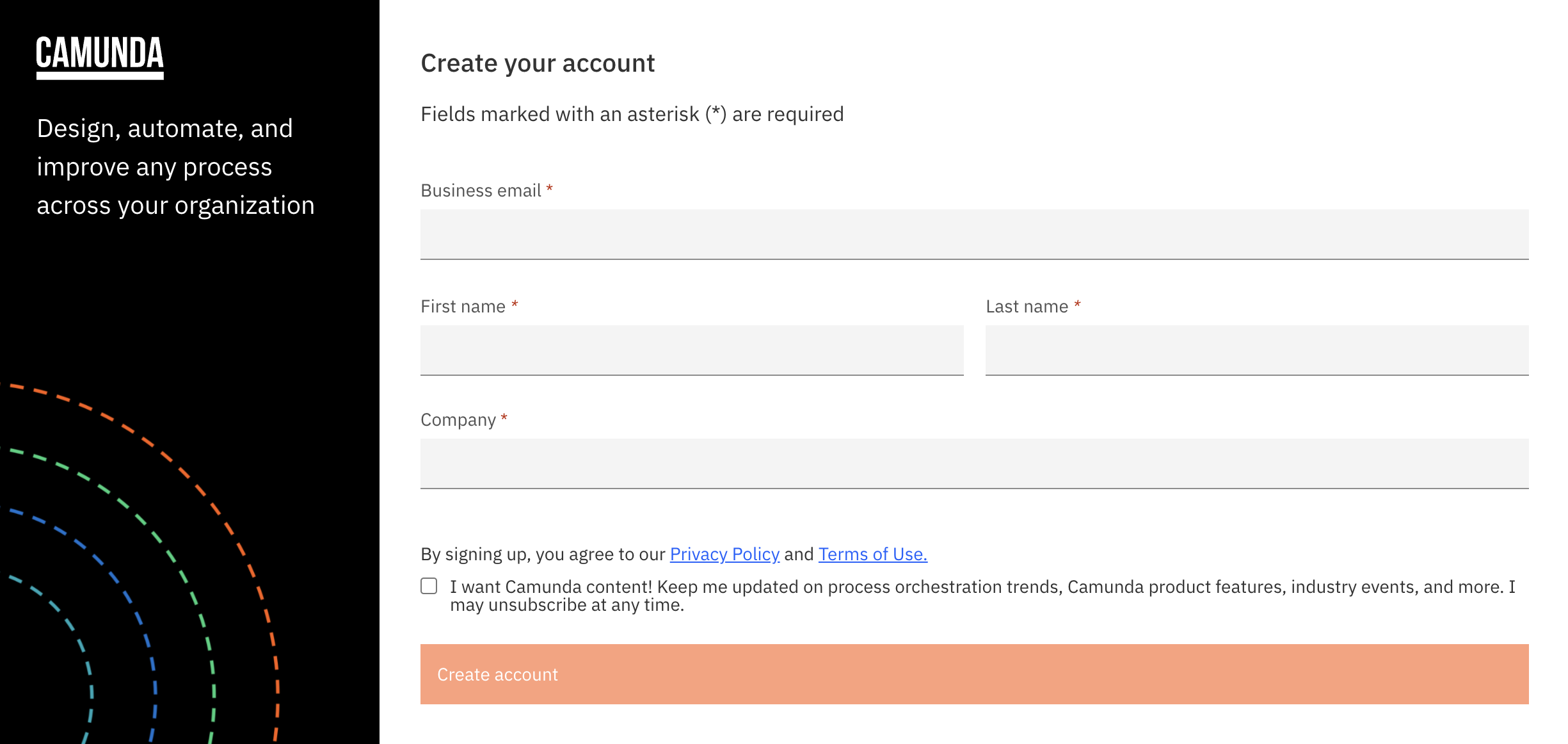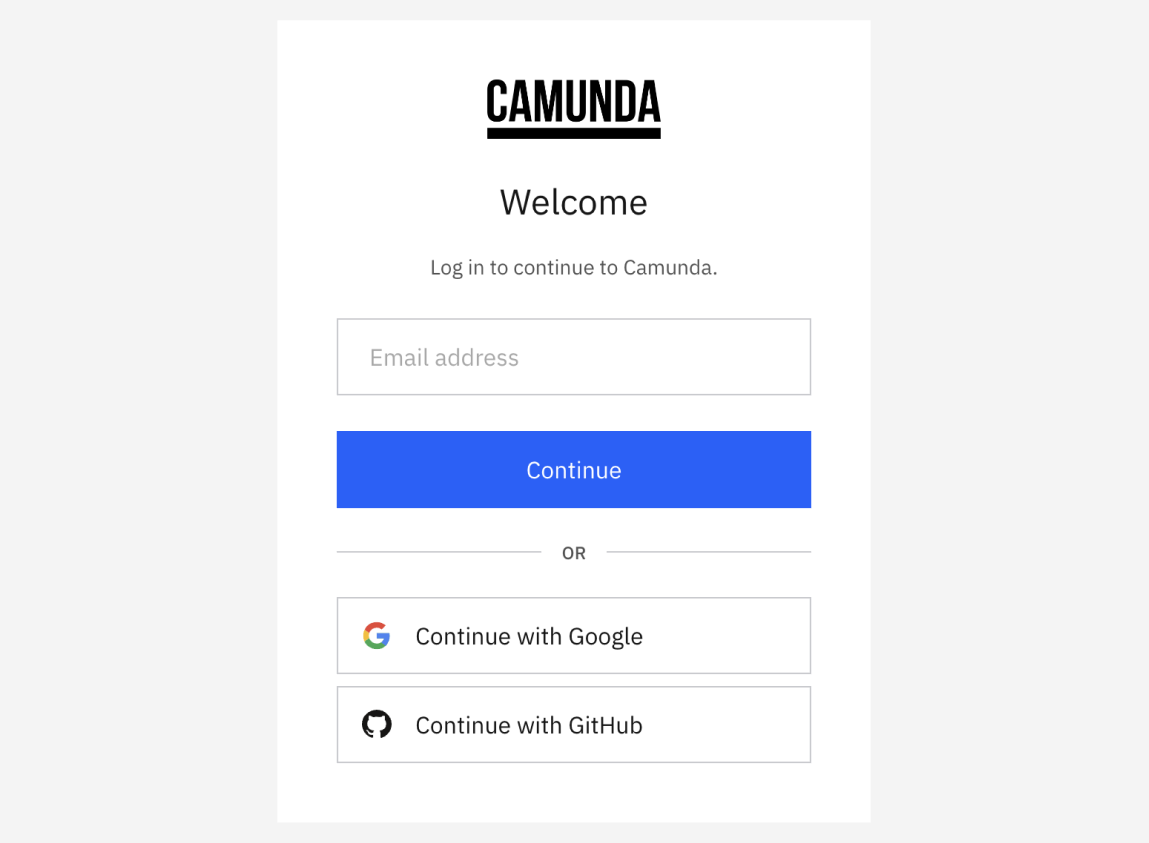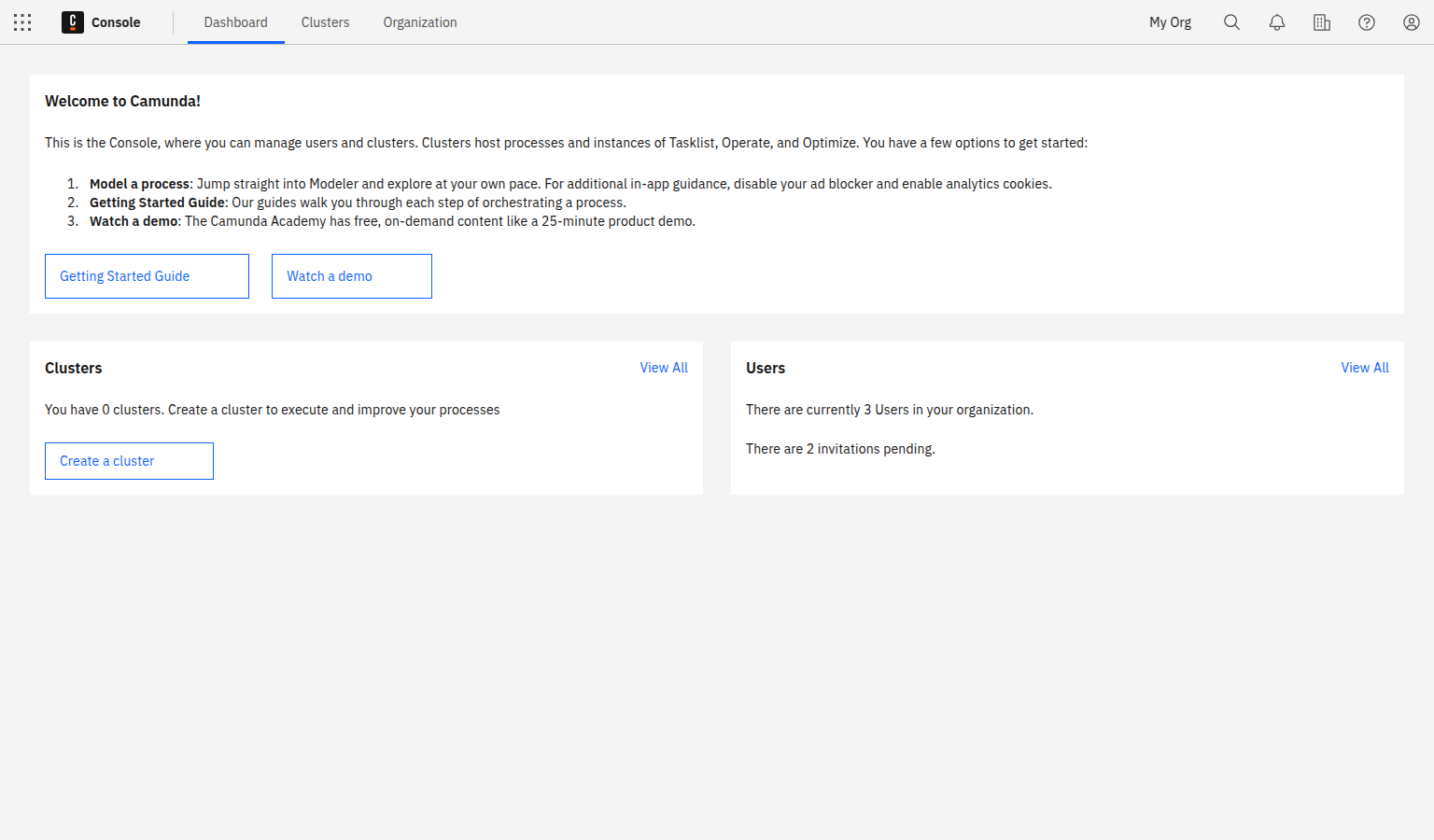Create an account
We're gradually rolling out changes that affect this page to users; your experience may vary.
Create a Camunda 8 account so you can create clusters, deploy processes, and create a new instance.
Visit signup.camunda.com/accounts to create your account:

Create an account
Fill out the form and submit, or sign up using the social sign up buttons like Google or GitHub.
When you fill out the form, you'll receive a confirmation email. Click on the link to verify your email address.
If you choose to create an account through the social sign up buttons, you'll be redirected to Console directly.
Log in to your Camunda 8 account
Log in with the email address and password you used in the previous form, or use the social login buttons. To access the login site directly, navigate to camunda.io.

After login, select the square-shaped Camunda components icon in the upper-left corner, and select Console to view the Console overview page. This is the central place to manage the clusters, diagrams, and forms you want to deploy to Camunda 8.
